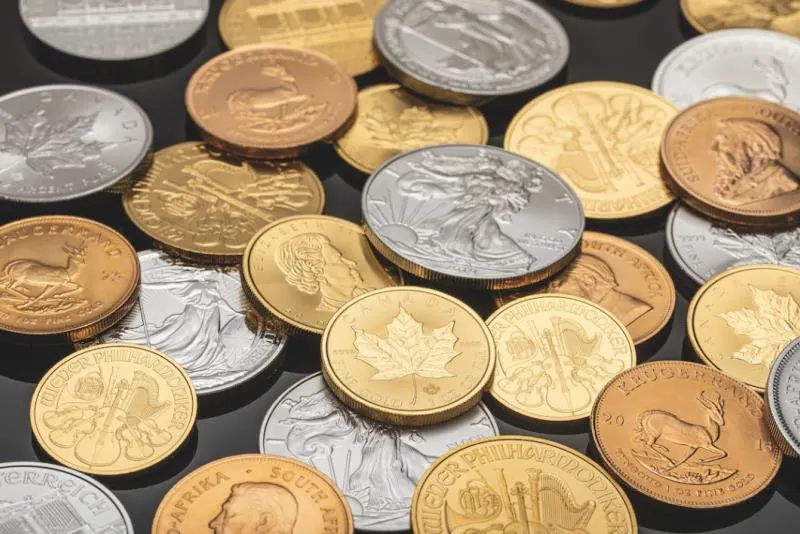If you’re new to investing, it’s important to know that, when it comes to investing in gold and silver, you have two main options: investing in hard assets or soft assets.
Hard assets are tangible and have intrinsic value. They can act as hedges against inflation and diversify financial portfolios. Physical gold and silver are considered hard assets.
So too are physical platinum and palladium. Of the four, gold is the most popular and has the best reputation.

Gold and silver soft assets are proxies that represent gold and silver value. These include gold and silver
- Exchange-traded funds (ETFs)
- Futures and options
- Mutual funds
Each option comes with its pros and cons. Deciding whether to invest in gold and silver hard assets or soft assets depends on how much you’re willing to invest, as well as your risk tolerance and financial goals.
That being said, investing in gold or silver bullion—hard assets—is often the better choice for beginning investors because, generally speaking, investing in gold or silver bullion is easier and more direct than investing in gold or silver ETFs (but possibly less liquid or cost-effective).
Gold and Silver Bullion: Hard Assets
Buying gold or silver bullion from a local gold or silver bullion dealer is perhaps the easiest way for someone to get into the gold and silver investment game.
But wait—what exactly is gold and silver bullion? They’re 1oz gold and silver bars and coins that are officially recognized as at least 99.5% and 99.9% pure, respectively.
Bullion coins should be recognizable and come from well-known mints. In some countries, such as Canada, bullion coins can be used as legal tender, though the metal contents are typically worth much more than the face value.
You can also sell silver coins, as well as gold coins, to bullion dealers and central banks, which keep bullion as a reserve asset.
One of the most common sizes of gold and silver bars and coins is 1 oz, which makes calculating their value easy. The spot price of gold and the spot price of silver are valued per ounce.
That means that, when you buy a gold or silver bullion bar or coin, you’re essentially buying one ounce of gold or silver.
You can also purchase fractional gold (1/10 oz, ¼ oz, ½ oz), but, the smaller the piece, the higher the price per ounce.
Another option is to purchase gold and silver in a gram variation.
Bottom Line
There are many potential benefits to investing your money in gold or silver bullion.
If you’re interested, head over to your local bullion dealer.
Just be sure to do your research first, so you know which dealers are most likely to give you a fair market price and provide you with industry and investment guidance.
